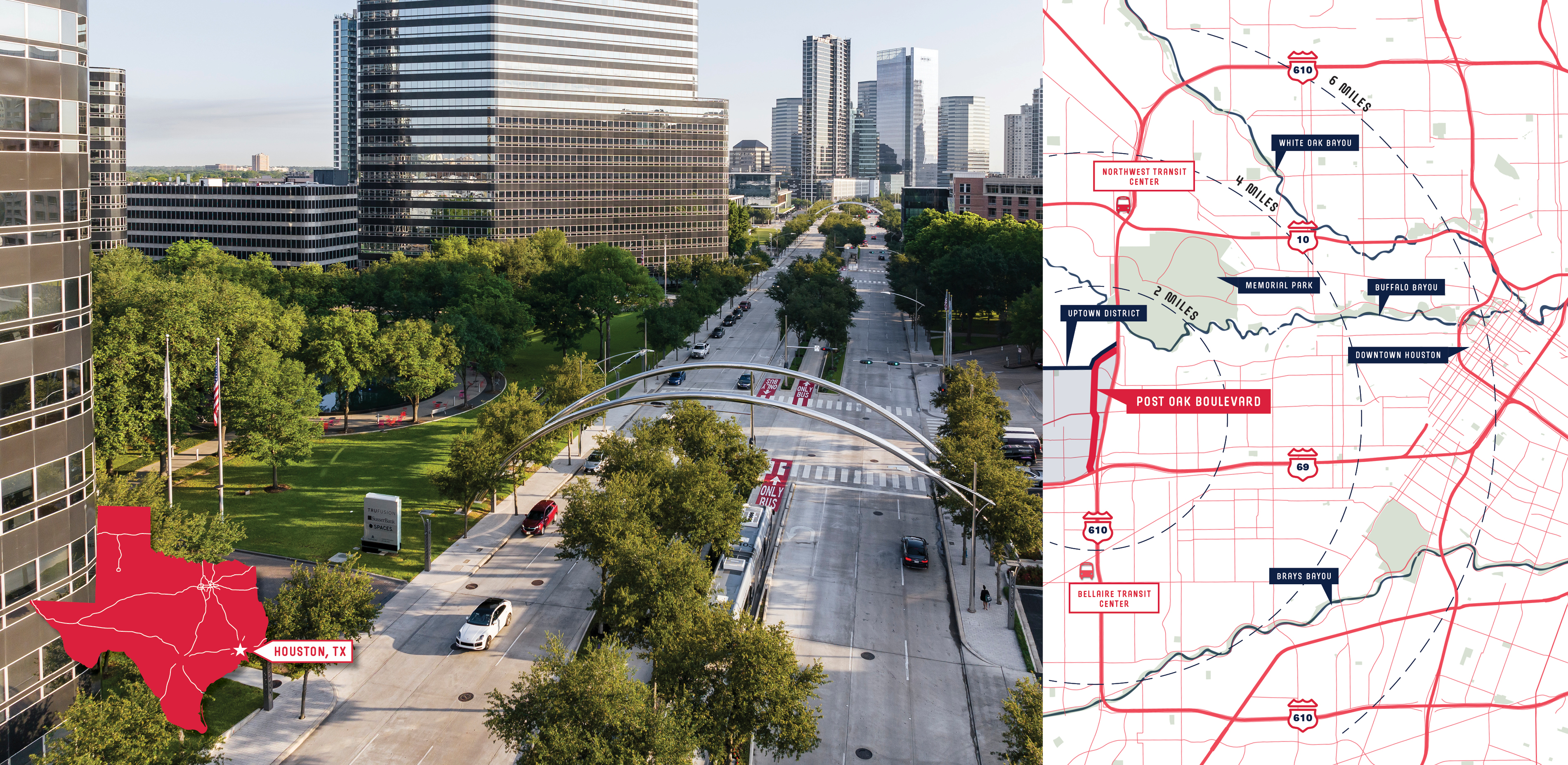Once dominated by cars, Post Oak in Uptown Houston is now a vibrant, green, and pedestrian-first urban corridor. This two-mile transformation showcases how cities can prioritize walkability, sustainability, and transit connectivity without compromising urban growth. The redesigned boulevard is not only a key mobility hub — it’s a thriving public space that reflects the future of livable, resilient cities.
Transforming Uptown Houston’s Core
Uptown Houston — one of the largest retail and business districts in the country — was long defined by traffic congestion and limited pedestrian infrastructure. As the area grew, so did the demand for improved mobility, public spaces, and environmental resilience. The redesign of Post Oak Boulevard addresses these needs with people-first urban design and green infrastructure solutions that support a more balanced and accessible city.
What was once a vehicle-centric corridor is now a showcase for complete streets planning. Dedicated Bus Rapid Transit (BRT) lanes provide fast, flexible connections across the region. Wider sidewalks, enhanced pedestrian crossings, and protected bike lanes make it easier — and safer — for people to move through the district on foot or by bike.

Post Oak Boulevard is home to over 2,000 companies and each day more than 2,000 people converge on this corridor to work, dine, and shop.
Green Infrastructure at the Forefront
A standout feature of the Post Oak Boulevard project is its lush urban canopy, with more than 800 live oaks planted along the corridor. These trees provide vital shade in Houston’s hot climate, improve air quality, and help define the boulevard’s character.
Beneath the surface, structural soil systems and permeable pavement improve stormwater management — an essential strategy in flood-prone urban environments like Houston. Together, these innovations boost the city’s climate resilience and ecological health while enhancing the human experience.

Public Space, Civic Pride, and Social Connection
Post Oak Boulevard is no longer just a way to get from point A to point B, it’s a community destination. Thoughtfully designed public spaces feature shaded seating, public art, and generous sidewalks that encourage gathering, walking, and engagement. The corridor regularly hosts events like the Uptown Holiday Lighting, drawing over 150,000 visitors annually, and reinforcing its role as a civic and cultural anchor.
By integrating social infrastructure with mobility and green space, the project strengthens community identity and supports a more inclusive urban future.